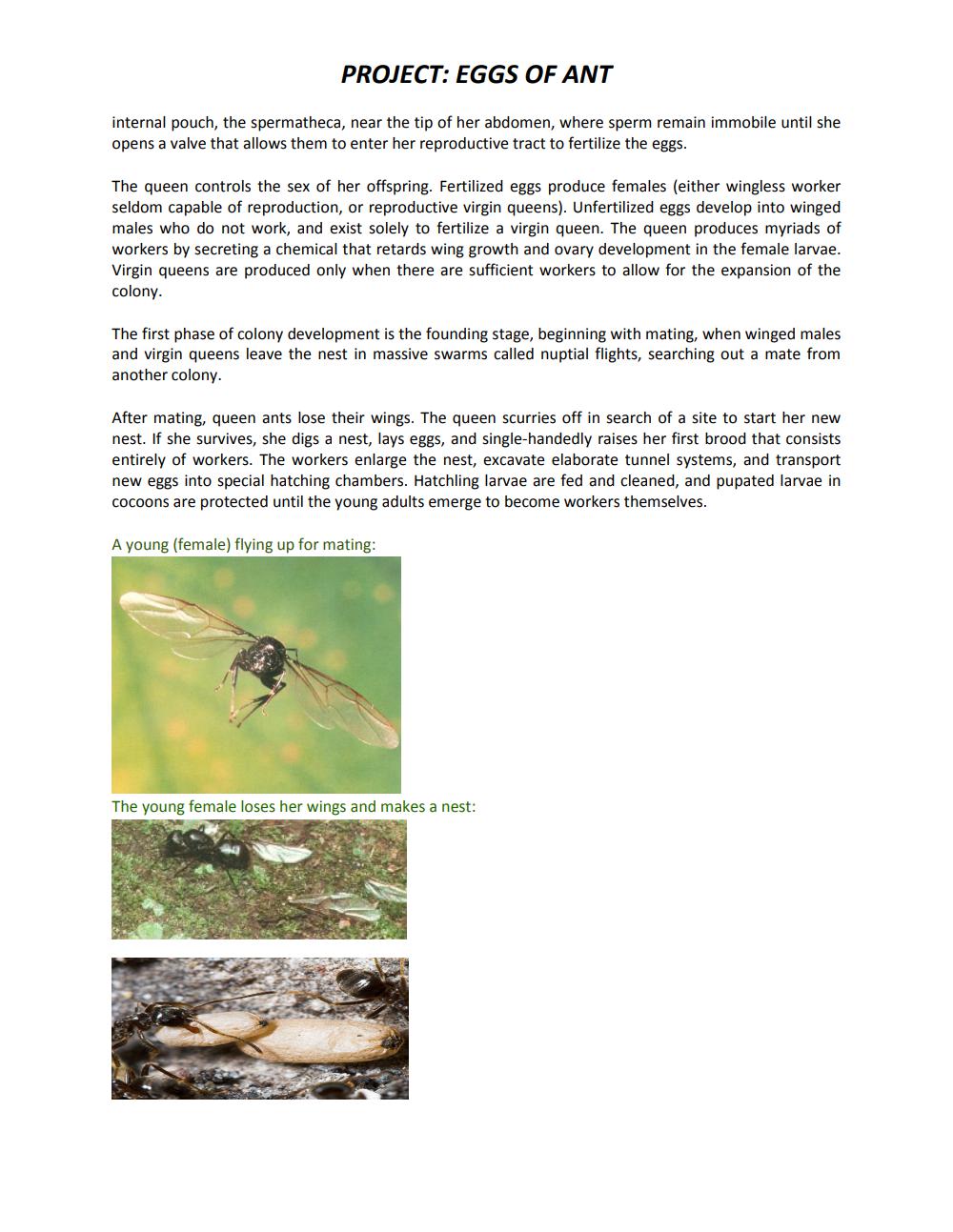Book Title: Eggs of Ant Author(s): Sahil Shah Publisher: Sahil Shah View full book textPage 4
________________ PROJECT: EGGS OF ANT internal pouch, the spermatheca, near the tip of her abdomen, where sperm remain immobile until she opens a valve that allows them to enter her reproductive tract to fertilize the eggs. The queen controls the sex of her offspring. Fertilized eggs produce females (either wingless worker seldom capable of reproduction, or reproductive virgin queens). Unfertilized eggs develop into winged males who do not work, and exist solely to fertilize a virgin queen. The queen produces myriads of workers by secreting a chemical that retards wing growth and ovary development in the female larvae. Virgin queens are produced only when there are sufficient workers to allow for the expansion of the colony. The first phase of colony development is the founding stage, beginning with mating, when winged males and virgin queens leave the nest in massive swarms called nuptial flights, searching out a mate from another colony. After mating, queen ants lose their wings. The queen scurries off in search of a site to start her new nest. If she survives, she digs a nest, lays eggs, and single-handedly raises her first brood that consists entirely of workers. The workers enlarge the nest, excavate elaborate tunnel systems, and transport new eggs into special hatching chambers. Hatchling larvae are fed and cleaned, and pupated larvae in cocoons are protected until the young adults emerge to become workers themselves. A young (female) flying up for mating: The young female loses her wings and makes a nest:Page Navigation
1 2 3 4 5 6
